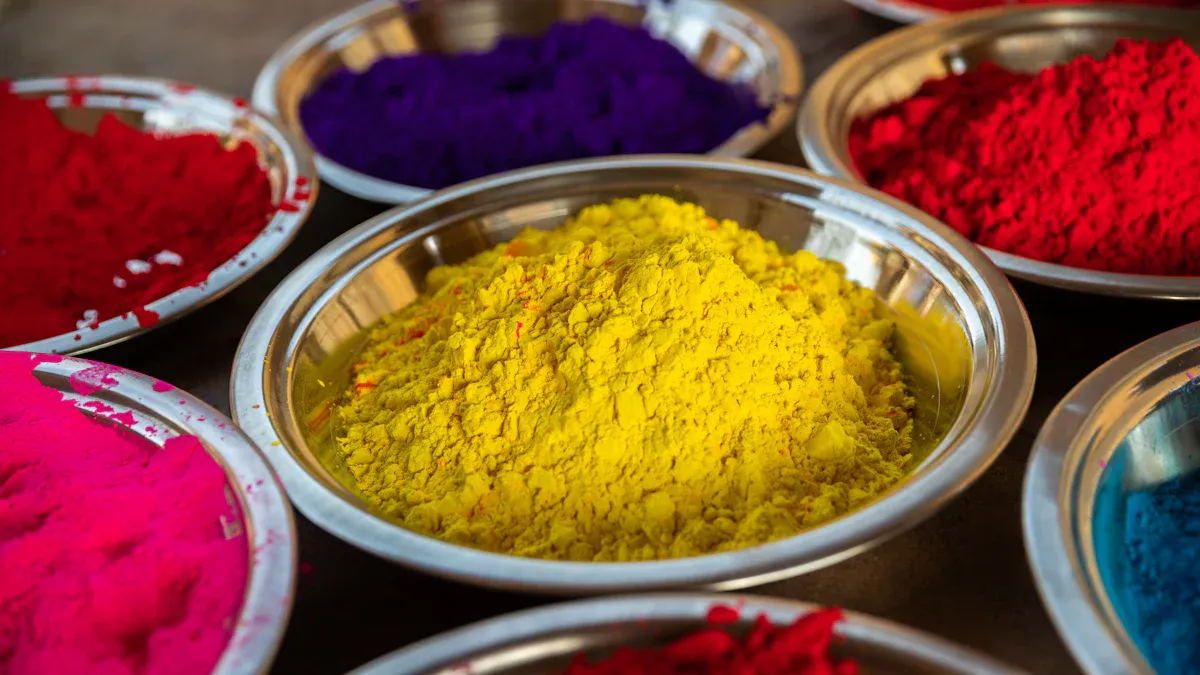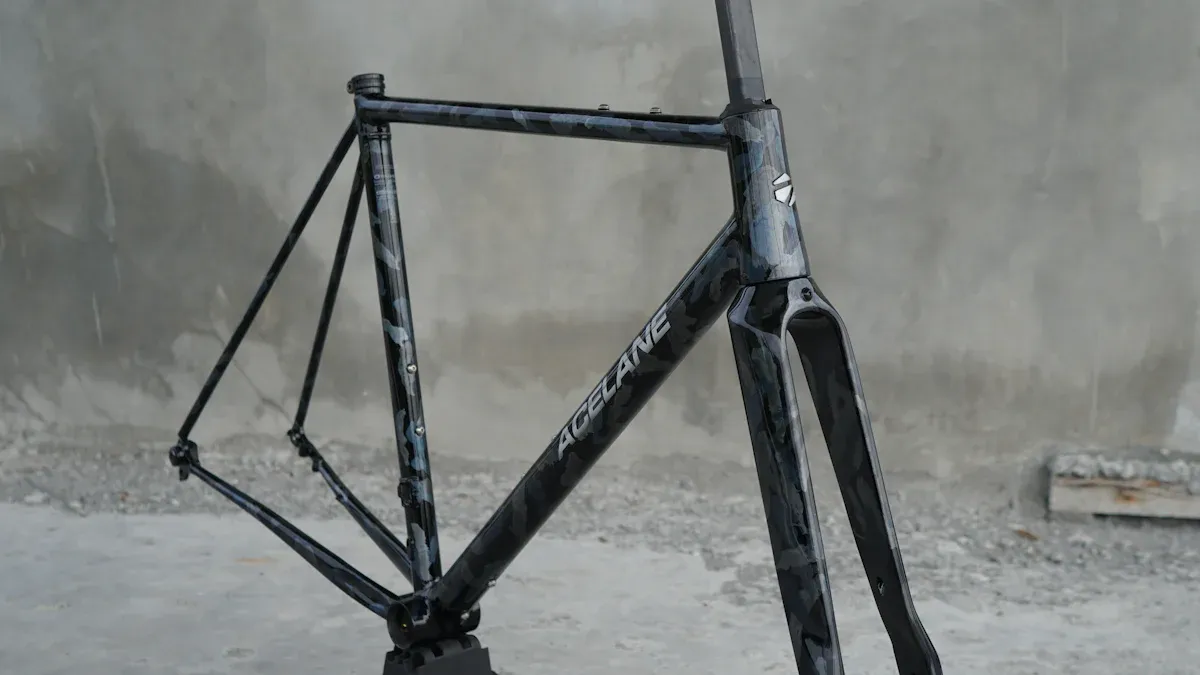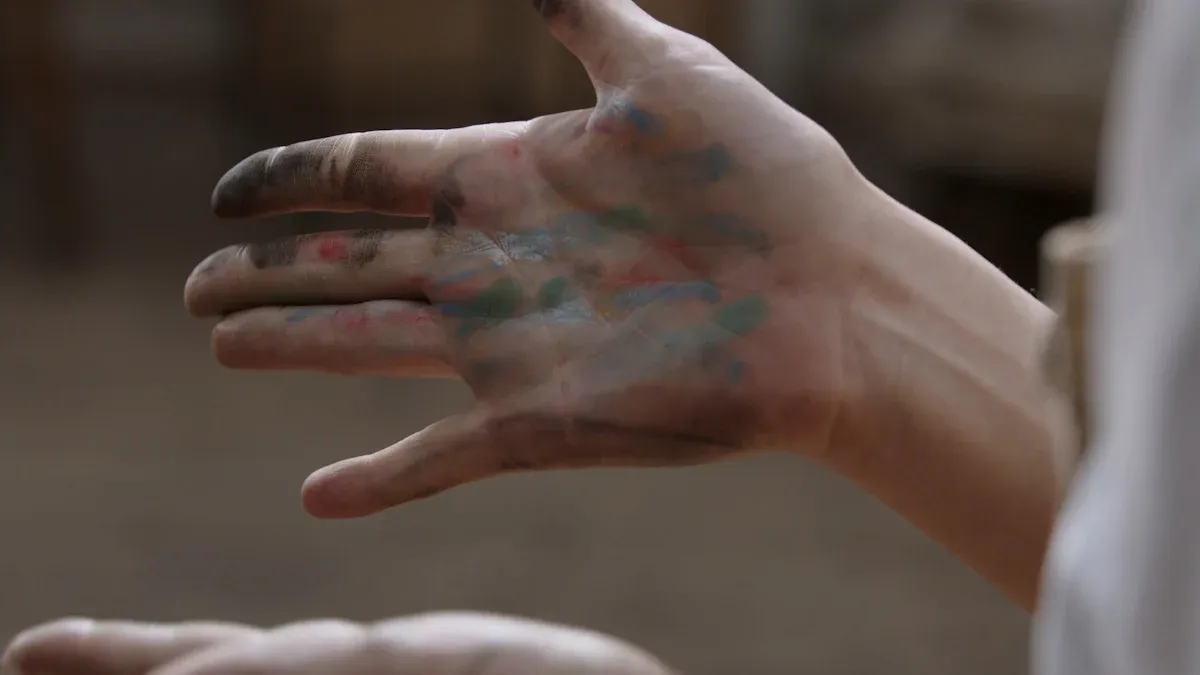
You want your powder coating bike frame to look good and last. First, you need to prepare well. Take the bike apart. Clean it. Strip old paint. Sand it. Mask parts. Each step is important in powder coating. If you skip things like chemical stripping or sandblasting, the coating can peel or scratch. For strong protection, use phosphate pretreatment and preheating.
Here are some tips:
Do not sand aluminum frames. Use chemical strippers.
Cover threads and use the right primers.
Use these tips to avoid mistakes. You will get a professional powder coating on your bike.
Key Takeaways
Take your bike apart fully and keep the parts in order. This helps make powder coating easy and putting it back together simple.
Wash the frame well with gentle soap and degreasers. This gets rid of dirt and grease. It helps the powder coating stick better.
Get rid of old paint and rust with chemical strippers or sandblasting. This gives you a clean, smooth surface. It makes the coating last longer.
Cover threads, holes, and important spots with heat-proof materials. This keeps them safe from powder and helps them fit right later.
Use phosphate pretreatment and heat the frame before coating. This helps the powder stick better and keeps your bike safe from rust and harm.
Prepping a Bike Frame

Disassembly
You want your powder coating to last, so start with a full disassembly. Take off every part from your bike frame. Remove the wheels, seat, pedals, handlebars, and any accessories. Don’t forget the small pieces like bottle cages, cable guides, and bolts. If you leave anything on, powder can get into places it shouldn’t. This can cause problems when you put your bike back together.
Tip: Keep all your parts in labeled bags or containers. This makes reassembly much easier later.
If you skip this step or leave powder on surfaces where parts connect, you might run into trouble. Powder coating is tough, but it can crack if squeezed between parts. Cracks let in water and cause rust. You also want a smooth fit for every part. So, prepping a bike frame the right way means taking your time with disassembly.
Cleaning
Now your frame is bare. It’s time to clean. Dirt, grease, and old oil can ruin your powder coating. Start with warm water and mild soap. Use a soft brush to scrub away grime. Dry the frame with a microfiber cloth to avoid water spots.
For stubborn grease, try a citrus-based degreaser. These cleaners break down oil fast and are safe for metal.
Wipes made for bikes can help with tough spots. They have a scrubby side for grime and a soft side for polishing.
Avoid harsh chemicals. They can damage the metal or leave a film that stops the powder from sticking.
Note: Rinse the frame well after cleaning. Any leftover soap or cleaner can mess up the powder coating.
Check your frame for rust, cracks, or dents. Fix these before moving on. A clean, smooth surface helps the powder stick better and last longer. Industry experts say that prepping a bike frame with careful cleaning and inspection is the key to a strong, even finish. When you remove all the old paint, rust, and grease, the powder bonds tightly to the metal. This makes your new coating tough and ready for anything.
Stripping and Sanding

Chemical Stripping
You want to start with a clean slate before powder coating. Chemical strippers help you strip the paint from your bike frame fast and with less effort. Products like Benco B17 and Remove 9000 work well for removing old paint and powder coating. If you have an aluminum frame, use these strippers carefully. Limit the exposure time to about 10-30 minutes to avoid harming the metal. Remove 9000 is a good choice because it is easy to use, does not corrode the metal, and you can even soak small parts in it.
Safety Tip: Always use chemical strippers outside or in a space with lots of fresh air. Wear gloves that protect against strong chemicals, and use a respirator mask. Never use caustic or lye-based strippers on aluminum, as they can damage your frame. Check the label and safety sheet for every product you use.
Some paint removers, like Jasco Paint & Epoxy Remover, may need several tries to work on powder coat. This can take more time and effort. After you strip the paint, handle your frame with clean gloves. Blow off any dust with compressed air and wipe the frame with denatured alcohol. This keeps the surface clean and ready for the next step.
Sandblasting
Once you remove the old paint, sandblasting gives your bike frame a smooth, even surface. This step removes any leftover rust, paint, or grime. Sandblasting works well for steel and aluminum frames. It also helps the powder coating stick better and last longer.
Use aluminum oxide grit, size 80-100, for the best results.
Set the air pressure up to 120 PSI.
Hold the blasting gun at a 45° to 60° angle to avoid damaging the frame.
Sandblasting is faster and gives a better finish than sanding by hand or using grinding discs. It cleans the frame and makes it look new. You save time and get a surface that is perfect for powder coating.
Factor | Sandblasting | Chemical Stripping | Grinding |
|---|---|---|---|
Initial Setup Cost | Higher | Lower | Moderate |
Operational Cost | Moderate | Lower | Moderate |
Time Required | Short (1-2 hours) | Longer (3-5 hours) | Moderate (2-4 hours) |
Effectiveness | High | Medium | Medium |
Safety Concerns | Low (with care) | Medium | Medium |
Final Finish Quality | Excellent | Good | Fair |
Note: Sandblasting works on many frame types, but always check your frame’s material first. Use care with carbon fiber or bonded joints.
Surface Inspection
After you finish stripping and sandblasting, take a close look at your bike frame. You want the surface to be clean, smooth, and free of rust, paint chips, or grease. Run your hand over the frame. If you feel rough spots, sand them with 200 grit sandpaper. For a super smooth finish, wet sand with 1200 grit.
Check for any leftover rust or chips. Sand these out until you see bare metal.
If you find scratches or small gaps, you can use an epoxy primer to fill them. This helps the powder coating stick and gives a better finish.
Before you move on, wipe the frame with acetone or denatured alcohol. This removes any last bits of dirt or oil.
Pro Tip: Always inspect your frame in good light. A clean, smooth surface means your powder coating will look great and last longer.
When you follow these steps, you set yourself up for a strong, professional finish. Careful prep now saves you time and trouble later.
Powder Coating Bike Frame Prep
Masking
Masking is a step you do not want to rush. You need to protect certain parts of your bike frame from powder coating. Threads, holes, and bearing races should stay clean and free of powder. If you let powder get into these spots, you will have trouble putting your bike back together. The fit may feel tight, or you might even damage the threads.
Here are some common masking materials you can use:
Heat-resistant tape for threads and holes. This tape can handle the high heat during baking.
Silicone plugs for small holes and eyelets.
Toothpicks or wooden dowels for ventilating holes.
Caps for larger openings.
Tip: Never use duct tape for masking. It cannot handle the heat and will melt, making a mess.
If you skip proper masking, powder coating can cover areas that should stay bare. You might need to clean out threads later, which can damage the finish. Uneven coating thickness can also fill threads and hide frame details. Always double-check your masking before you move on. This step gives you the best protection for your bike frame’s important parts.
Phosphate Pretreatment
Phosphate pretreatment is a secret weapon for a long-lasting powder coating bike frame. This process adds a thin, textured layer to the metal. The layer helps the powder grip the frame better. It also acts as a barrier, giving your bike extra protection from rust and corrosion.
The process goes like this:
Rinse it well.
Apply the phosphate solution.
Rinse again and let it dry.
Phosphating makes the surface rougher, which helps the powder stick. It also blocks water and oxygen, so your frame stays safe from rust. With this step, your powder coating bike frame can last much longer, even in tough weather. Some tests show that phosphate pretreatment can boost salt-spray resistance from 250 hours up to 1500 hours. That means more protection for your ride.
Preheating
Preheating your bike frame is a step you should never skip. When you preheat, you drive out any leftover moisture or oils. This helps the powder melt and stick evenly. For most bike frames, you want to preheat to about 390°F (200°C) for 10 to 15 minutes. This temperature works well for both steel and aluminum frames.
If you do not preheat, you risk poor adhesion. The powder might not bond well, and the coating could peel or chip. Preheating also helps with frames made from porous alloys. These frames can trap air and oils, which may bubble out during baking. Preheating gives you a smooth, even finish and better protection.
Note: Always let the frame cool slightly before applying powder. If it is too hot, the powder may clump.
Grounding and Hanging
Proper grounding and hanging make a big difference in your powder coating bike frame project. You want the powder to cover every part of the frame evenly. To do this, hang the frame with a metal wire or a strong hook. Make sure the wire touches bare metal. This creates a path for electricity, which helps the powder stick.
Here are some best practices:
Hang the frame by a metal wire or hook. Make sure it is secure and balanced.
Expose a small area of bare metal where the hook touches the frame for good grounding.
Use racks or hooks that can hold the weight of your frame. Unistrut sliding hook racks and Gear Blocks hooks work well for most bikes.
Preheat the frame while it hangs. This helps with even heating and coating.
After applying powder, keep the frame hanging in the oven for baking. This ensures a smooth, even cure.
Pro Tip: Always check that your grounding is solid. Poor grounding can cause patches where the powder does not stick.
With the right hanging and grounding, you get a powder coating bike frame that looks great and lasts. You also avoid missed spots and weak areas, giving your bike the best protection possible.
You can achieve a pro-level powder-coated bike frame by following three key steps: prep your frame, strip and sand, then mask and preheat. Stick to a checklist for each stage. This helps you avoid mistakes and get a finish that lasts for years. Powder coating protects your bike from rust, chips, and fading, so you ride with pride.
Tip: Stay patient and take your time. Even at home, you can get results that look and feel amazing.
Quick Checklist:
Clean and inspect the frame
Bake and finish with clear coat
Use stainless hardware for extra protection
FAQ
How long does powder coating last on a bike frame?
Powder coating can last for years if you take care of it. Keep your bike clean and dry. Avoid hard impacts. If you see chips or scratches, fix them quickly. This helps your frame stay strong and look good.
Can I powder coat my bike frame at home?
Yes, you can powder coat at home if you have the right tools. You need a powder coating gun, an oven, and safety gear. Follow each step closely. Take your time with prep work for the best results.
What is the best way to clean my powder-coated bike frame?
Use mild soap and water. Wipe the frame with a soft cloth. Avoid harsh cleaners or rough brushes. These can scratch the finish. Regular cleaning is key to maintaining your powder coat bike and keeping it looking new.
Do I need to remove old paint before powder coating?
Yes, you must remove all old paint and rust. Use chemical strippers or sandblasting. This gives the powder a clean surface to stick to. Skipping this step can cause the new coating to peel or chip.
How do I protect threads and holes during powder coating?
Mask threads and holes with heat-resistant tape or silicone plugs. This keeps powder out of places where you need a tight fit. Always double-check your masking before you start coating.
See Also
Tips For Perfectly Applying Decals On Your Bike Frame
Essential Advice For Builders Working With Gas Bike Frames
Top Three Tips For Choosing The Best Lowrider Frames
